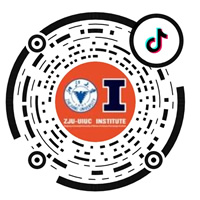Recently, the IEEE Transactions on Nuclear Science (TNS) published a cross-disciplinary research achievement from our institute on the global optimization fitting of X-ray reflectivity curves. The first author of the paper is LI Mingfeng, a master's student in mechanical engineering at ZJUI from the class of 2021, and the sole corresponding author is Associate Prof. Oleksiy Penkov, a researcher at ZJUI. Other authors include Associate Prof. Said Mikki, a researcher at ZJUI, and Paul C. Uzoma, a postdoctoral researcher at ZJUI. IEEE TNS is a journal of the IEEE Nuclear and Plasma Sciences Society, and according to the JCR impact factor, it has consistently ranked in the top five in the field of nuclear science and technology.
This research significantly improves the efficiency of fitting X-ray reflectivity (XRR) of periodic multilayer, enabling rapid and accurate analysis of multilayer films containing hundreds of material layers and obtaining parameters such as thickness, roughness, and density for each layer. Compared to time-consuming and expensive techniques such as TEM and SEM, this fitting method can quickly analyze material structures to guide researchers in their subsequent preparation work, aiming to promote innovation and development in the thin-film materials industry.
The periodic multilayer mirrors are manufactured using the advanced deposition system independently developed by the research group led by Prof. Oleksiy Penkov. The multilayer mirror is usually composed of alternating layers of light and heavy materials, forming N pairs of material layers. To achieve high reflectivity, it is generally necessary to deposit over 200 periods. To obtain the parameters of each layer (thickness, roughness, density), the X-ray diffraction instrument is used to characterize the X-ray reflectivity curve (XRR) of the multilayer, which is then manually fitted using the independently developed software X-Ray Calc. Since manual fitting cannot analyze the parameters of all layers, it typically requires inputting one period's parameters, setting N periods, and fitting the X-ray reflectivity curve. In practice, the parameters of each period may vary slightly due to factors such as power supply and substrate temperature, and manual fitting is not effective for analyzing multilayer and is time-consuming.
For the reasons above, this paper proposes a method for globally optimizing the fitting of X-ray reflectivity curves (Levy flight particle swarm optimization algorithm). X-Ray Calc, written in Object Pascal language, integrates an X-ray reflectivity mathematical model, and it takes only 0.069 seconds to calculate the reflectivity of a 200-period multilayer film on a 6-core i5-10500 CPU. X-Ray Calc is improved into an exe file, with the output being a cost function. The optimal solution is obtained by optimizing the cost function output through the Levy flight particle swarm algorithm, completing the fitting process. Tests show that fitting the reflectivity curve of a 200-period multilayer takes only 20 seconds, which not only greatly improves the fitting efficiency but also enables the analysis of the parameters of each film layer.
▲ The advanced deposition system independently developed by the research group led by Prof. Oleksiy Penkov
▲ a) Schematic diagram of periodic multilayer mirror; b) The fitting of X-ray reflectivity
This paper, co-supervised by Associate Prof. Oleksiy Penkov and Associate Prof. Said Mikki, is a result of interdisciplinary research. Associate Prof. Said Mikki is an expert in the field of particle swarm algorithm applications, and in this paper, he mainly guided the optimization problem of particle swarm algorithms in the X-ray domain. Associate Prof. Oleksiy Penkov's research fields involve materials, physics, mechanics, and software development, and in this paper, he mainly guided the experimental process and the development of the computational software. LI Mingfeng said, "Since I started studying here, I have been deeply influenced by the interdisciplinary research of the research group and ZJUI. I have been continuously learning new knowledge from different fields, experiencing the joy of scientific research in interdisciplinary exploration, which has prompted me to transfer from the master program to PhD program, in order to continue on the path of scientific research.” Now LI Mingfeng has completed his transfer process and has started pursuing his doctoral degree.
▲ LI Mingfeng operated the advanced deposition system under the guidance of Associate Prof. Oleksiy Penkov
▲ Group meeting of Prof. Oleksiy Penkov's research group
*Article Link:https://ieeexplore.ieee.org/document/10066334







